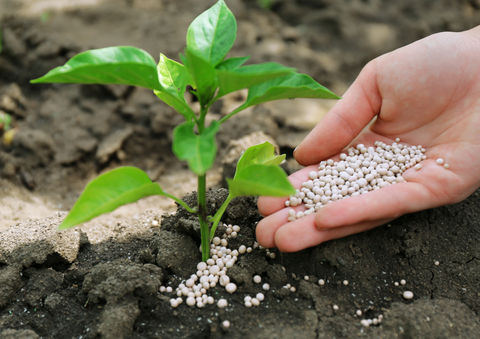
How to Grow Indoor Plants
Step 1: Buy fake plants.
Step 2: Tell people they’re real.
Ah! If only it were that easy!
As humans, we have a strong connection to nature and when we bring nature into our indoor surroundings, it helps make us more calm, content and focused. (Or maybe we like to tell ourselves that... But hey, anything helps!)
Whether you’re still working from home or you’ve returned to the office, adding some greenery to your space boosts your health in ways you probably didn’t even realize. Beautiful, healthy houseplants are the perfect way to fill your surroundings with life and colour. Not only do indoor plants offer strong health benefits, bringing plants into your home and office is also aesthetically pleasing — adding more comfort and beauty to your life! Many studies have shown that plants keep us happier and healthier, offering both physical and psychological benefits such as:
- Improving your mood
- Lowering stress levels
- Reducing fatigue
- Minimizing the occurrence of headaches by improving air quality
- Sharpening attention
Whether you want an indoor jungle or you can only handle a few plant babies at a time, we have some tips to share on how to grow and care for your indoor plants successfully.

Know When to Water Your Plants
While this may be obvious to some, if you’re worried about giving your plants too much or too little water, there are some things you can look out for. All indoor plants are different, but it’s better to water on an “as-needed” basis, rather than on a scheduled watering cycle. Overwatering is the most common reason for indoor plant death (so unfortunate, right?!). The rule of thumb is your plant should be watered when the top ½ to 1 inch of soil feels dry — in a well-drained, appropriate-sized container. Many tropical plants enjoy a lukewarm shower (in the bathtub or the kitchen sink) every once in a while too! Again, all plants are different (cacti and succulents don’t need as much water), so just keep in mind that the soil should be moist, not soggy… A plant moisture metre can help take the guesswork out or a quick Google search could answer your plant-parent worries.

Make Sure Your Plant is Getting Enough Light
Again, this may be an obvious one, but do you know how much light plants need? If we can all think back to grade-school science, because we were paying attention, plants get their growth energy from photosynthesis, which can only happen with light. So giving your plants the right amount of light (not too much and not too little) is important.
Indoor plant light needs typically fall within three categories: bright light, indirect light and low light. Plants that thrive in bright light should usually be placed near south or west-facing windows that receive direct sunlight throughout the day. Indirect light is best found near an east-facing window or further away from a south or west-facing window (i.e. near the centre of the room). And low light can be found in rooms with north-facing windows or windows that might have obstructed light coming in (i.e. a tree outside blocking some light).
As for which specific plants need bright, indirect or low-light exposure, be sure to research its lighting needs before purchasing.

Give Your Plant the Right Home
No, we don’t mean choosing which living room shelf your plant would look best on, we mean selecting an appropriate-sized container for it to thrive inside of. Find a pot that is no more than a few inches wider than your plant’s current root mass diameter. You can always re-pot when your plant grows, but a larger pot than necessary won’t let its roots absorb moisture fast enough. Do a quick Google search as well, since some plants actually like to be root-bound.

Have you checked out the propagation vase in our Spring Balanced Home Box? A propagation vase is a great way to make more plant babies using cuttings of your existing plants that root well in water, and they can add a nice design touch to your space as well! Many indoor plants benefit from being propagated, and it's an inexpensive way to get more plants out of the ones you already have!

Restore Those Nutrients
To sustain a healthy houseplant, you need to replenish those nutrients and fertilize your soil. Just like overwatering, you can also overfertilize and there are different types of fertilizer to look into. In general, you should be fertilizing your indoor plants once a month when they're growing or flowering. Most plants put on a “growth spurt” during the spring and summer months and typically stay stagnant during the winter months. There’s no need to continue the fertilization process then, as too much fertilizer can burn their little roots and halt their growth.

Groom... As Needed!
Your indoor plants will need some TLC every so often. Neatly trim off dry or brown leaf tips, wipe down both sides of leaves with a damp cloth to keep them dust-free, and be sure to remove any dying/dead flowers, leaves or branches. Keeping your plants neat and clean not only looks more attractive but reduces the chance of insect and disease problems. Also, avoid those leaf shine products. They may make your plant look nice, but they clog the leaf's pores… And no one likes a clogged pore!
We hope these few tips help you and your indoor plant children succeed! Next time you’re watering your plants, slow down and take a few deep breaths. The act of caring for your plants can help decrease your stress levels. Admire them. Touch them. Even talk to them! But don’t overwater them.
To your Balanced health,
Your friends at The Balanced Company

